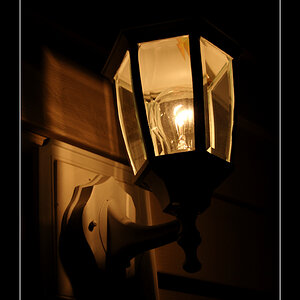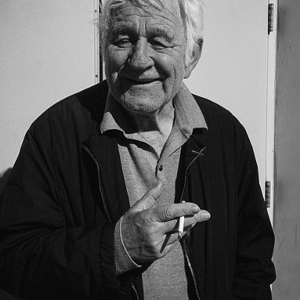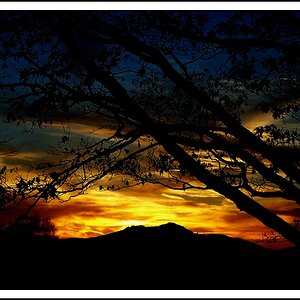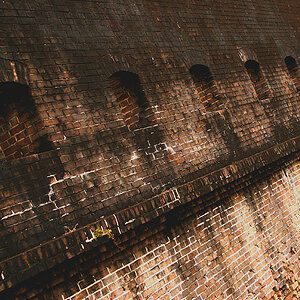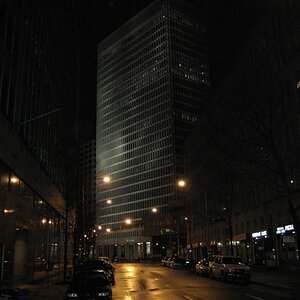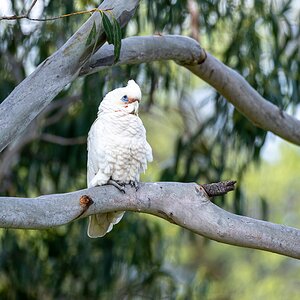Navigation
Install the app
How to install the app on iOS
Follow along with the video below to see how to install our site as a web app on your home screen.

Note: This feature currently requires accessing the site using the built-in Safari browser.
More options
You are using an out of date browser. It may not display this or other websites correctly.
You should upgrade or use an alternative browser.
You should upgrade or use an alternative browser.
EOS 350D Question!
- Thread starter Tibi_N
- Start date
The DOF preview button literally does that, it gives you a preview of the depth of field i.e how much of the scene is in focus.
It does that by setting the aperture to that it will be when you press the shutter button.
You probably know that DOF is inversely proportional to aperture size so as the aperture gets smaller (higher F numbers) the depth of field increases.
Typically when you press the DOF button you'll notice that the scene gets darker and that's because the normal view is with the aperture wide open.
Try setting the F stop to a reasonably high number (small aperture) and then pressing the DOF button, the first thing you notice is the scene gets darker but if you look carefully you'll see that more of the scene is now in focus.
Have fun!
It does that by setting the aperture to that it will be when you press the shutter button.
You probably know that DOF is inversely proportional to aperture size so as the aperture gets smaller (higher F numbers) the depth of field increases.
Typically when you press the DOF button you'll notice that the scene gets darker and that's because the normal view is with the aperture wide open.
Try setting the F stop to a reasonably high number (small aperture) and then pressing the DOF button, the first thing you notice is the scene gets darker but if you look carefully you'll see that more of the scene is now in focus.
Have fun!
- Joined
- Dec 16, 2003
- Messages
- 33,896
- Reaction score
- 1,853
- Location
- Edmonton
- Website
- www.mikehodson.ca
- Can others edit my Photos
- Photos NOT OK to edit
Welcome to the forum.
Do you know how the aperture of the lens works? And how aperture affects Depth of Field?
The aperture is the hole through which light passes through the lens. It is adjustable and measured in F stops. A big F number (F22) is a smaller opening and a small F number (F2.8 ) is a bigger opening. The bigger the opening (small F number) the less DOF you will have. The smaller the opening (high F number), the more DOF you will have.
When you are looking through your camera's viewfinder & lens...the aperture is always open as big as possible, to let in the most light. Because you are looking through the biggest opening, you are seeing the shallowest DOF...so things that may look out of focus in the view finder, may actually be in focus in the photo.
The DOF preview button stops down the aperture in the lens so that you can see the actual DOF that the photo will have. Now the smaller the aperture is set to stop down, there will be less light that is coming through the lens...so the viewfinder will appear darker. Let your eye adjust to the darker image and closely inspect the areas that are in or out of focus. It takes getting used to.
Of course with digital, you could simply take the photo and then look at the image on the screen to see the actual DOF.
Hope this helped.
Do you know how the aperture of the lens works? And how aperture affects Depth of Field?
The aperture is the hole through which light passes through the lens. It is adjustable and measured in F stops. A big F number (F22) is a smaller opening and a small F number (F2.8 ) is a bigger opening. The bigger the opening (small F number) the less DOF you will have. The smaller the opening (high F number), the more DOF you will have.
When you are looking through your camera's viewfinder & lens...the aperture is always open as big as possible, to let in the most light. Because you are looking through the biggest opening, you are seeing the shallowest DOF...so things that may look out of focus in the view finder, may actually be in focus in the photo.
The DOF preview button stops down the aperture in the lens so that you can see the actual DOF that the photo will have. Now the smaller the aperture is set to stop down, there will be less light that is coming through the lens...so the viewfinder will appear darker. Let your eye adjust to the darker image and closely inspect the areas that are in or out of focus. It takes getting used to.
Of course with digital, you could simply take the photo and then look at the image on the screen to see the actual DOF.
Hope this helped.
Thanks a lot guys!!!
I'm beginning to 'see the light'
But, how do you obtain the maximum depth of field, on a regular basis, without any computer programs like DoF Master!? Is there an empiric rule?(or someting)
PS:sorry, if i'm being annoying!
I'm beginning to 'see the light'
But, how do you obtain the maximum depth of field, on a regular basis, without any computer programs like DoF Master!? Is there an empiric rule?(or someting)
PS:sorry, if i'm being annoying!
There are cases when you want a minimum DOF such as some portrait work but remember that as F number increases (smaller aperture) the shutter has to be open longer to compensate.
This means that it's a trade-off between DOF and shutter speed, if for instance you're shooting something moving and you want to stop motion then a fast shutter speed is called for and this will limit the F number you can go to...well that and film ISO but hopefully you see the connection.
This means that it's a trade-off between DOF and shutter speed, if for instance you're shooting something moving and you want to stop motion then a fast shutter speed is called for and this will limit the F number you can go to...well that and film ISO but hopefully you see the connection.
I can see the connection  !! I'll try to be more specific!
!! I'll try to be more specific!
For example, when you're shooting a landscape (sunlight, iso 100, using a large F number F22 , F36, or somethin'), how can I make sure that I'm using the right aperture in order to obtain a greater depth of field, and where should I point the focus for that? I mean, is there a basic rule, or do I have to stick my eye in the viewfinder, press the dof preview button, and hope I'll see what is and isn't in focus!!!
For example, when you're shooting a landscape (sunlight, iso 100, using a large F number F22 , F36, or somethin'), how can I make sure that I'm using the right aperture in order to obtain a greater depth of field, and where should I point the focus for that? I mean, is there a basic rule, or do I have to stick my eye in the viewfinder, press the dof preview button, and hope I'll see what is and isn't in focus!!!
Well pressing the DOF preview button will give you an idea as to how much is in focus, I guess that's the reason for the button anyway.
If you're just looking for maximum DOF for whatever reason, then go to the smallest aperture (highest F number) you can live with or the camera/lens can achieve because it's a direct relationship, smaller the aperture the greater the DOF.
If you're just looking for maximum DOF for whatever reason, then go to the smallest aperture (highest F number) you can live with or the camera/lens can achieve because it's a direct relationship, smaller the aperture the greater the DOF.
SLOShooter
TPF Noob!
I heard somewhere that you want to focus 1/3 of the way to the horizon and use the maximum f number that you can safely shoot. IE Go as high as you can without getting shake or blur from the long shutter speed. That will maximaze the in DOF. One thing to note though is that when you have some thing focused at infinity your DOF is essentially infinate.
Now whether you want a long or short DOF is up to you as the artist.
Now whether you want a long or short DOF is up to you as the artist.
Thanks again guys!! 
I 've just read something about it in one of Jim Nachtwey's Articles and SLOShooter has really got it right!!!
Nachtwey says that when he is looking for greater depth of field he focuses at 1/3 of the desired image. He also says it really works
He also says it really works
You guys are really cool, you answer immediately and you definitely know what you're talking about!!!
Thank Again!!!
I 've just read something about it in one of Jim Nachtwey's Articles and SLOShooter has really got it right!!!
Nachtwey says that when he is looking for greater depth of field he focuses at 1/3 of the desired image.
You guys are really cool, you answer immediately and you definitely know what you're talking about!!!
Thank Again!!!
Similar threads
- Replies
- 0
- Views
- 397
- Replies
- 10
- Views
- 427
- Replies
- 4
- Views
- 559


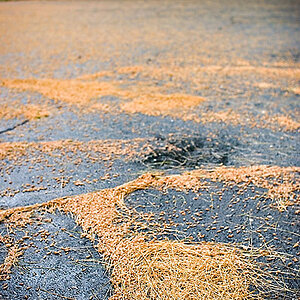

![[No title]](/data/xfmg/thumbnail/39/39288-2d76486ccc9042c6fb525aaaaffff1fb.jpg?1619738957)


